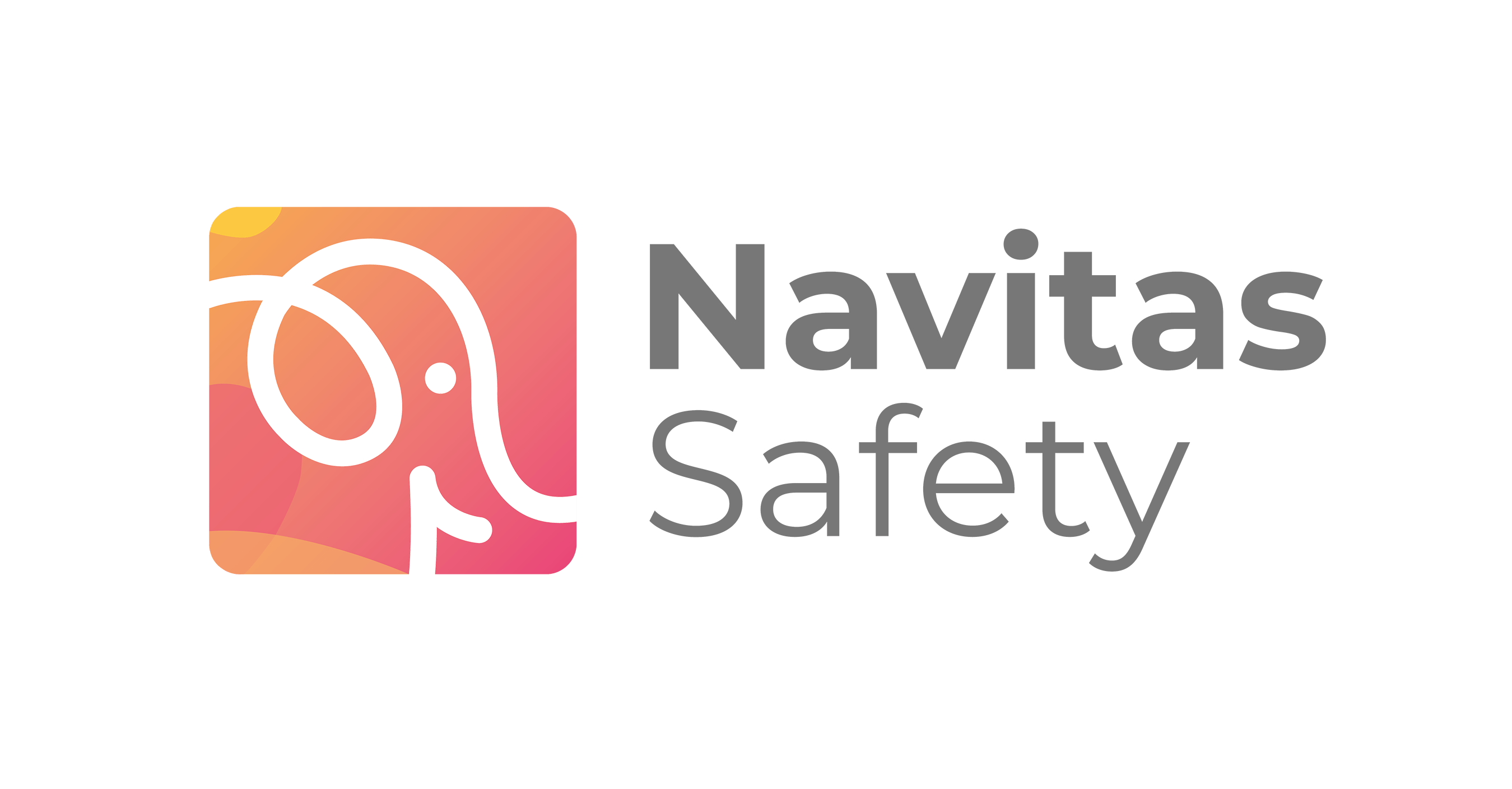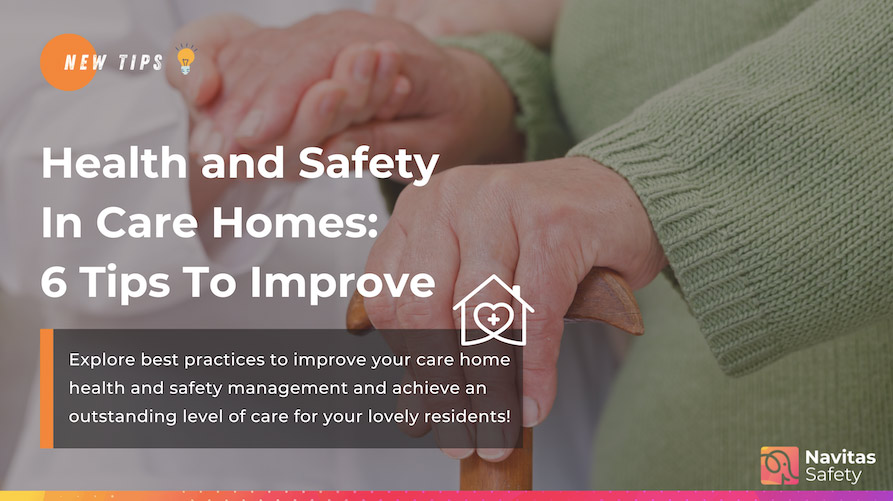Health and safety in care homes is of utmost importance. Namely because residents are vulnerable. As a care home you are legally required to keep your people safe, including your teams and residents. Yet, the latest CQC 2022 data shows that only 4% of care homes in the UK achieved an outstanding rating during inspection. In addition, 17% had major safety breaches that need to be tackled to better protect staff and residents. This blog will take you through 6 tips to improve your care home health and safety management and help you achieve an outstanding level of care!
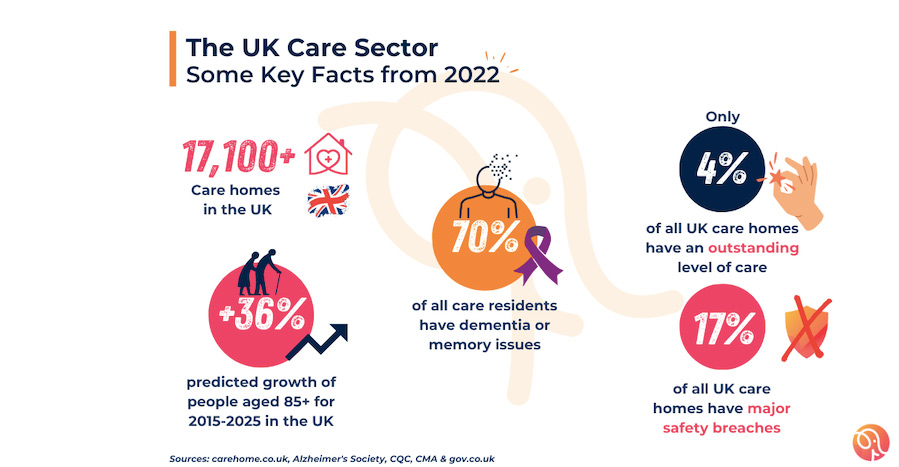
Health and safety in care homes: why does it matter so much?
It’s your duty
You must ensure that your care home is a safe place to work and reside. And more specifically because your residents are much more vulnerable and therefore require meticulous attention to health and safety standards. On top of that, there’s been an increased pressure on care homes because of Covid-19 expectations. Also, as the UK population dramatically continues to age, care homes are expected to have even more residents in the near future, with a predicted 36% growth in people aged 85+ between 2015 and 2025. You must be ready!
Health & safety in a care home: common risks to avoid
First, take the time to really scope out all potential hazards and risks in your care home. You might want to look into the following:
- Uneven floors
- Obstructed pathways
- Unclear signage for direction
- Non-compliant medicine storage and temperature checks
- Cross contamination risks in food preparation and storage areas
- Unsafe stairs with railings in poor condition
- Complicated fire safety procedures for care residents
- Liquid spillage leading to falls, slips and trips
Care home health and safety: more about the CQC inspection
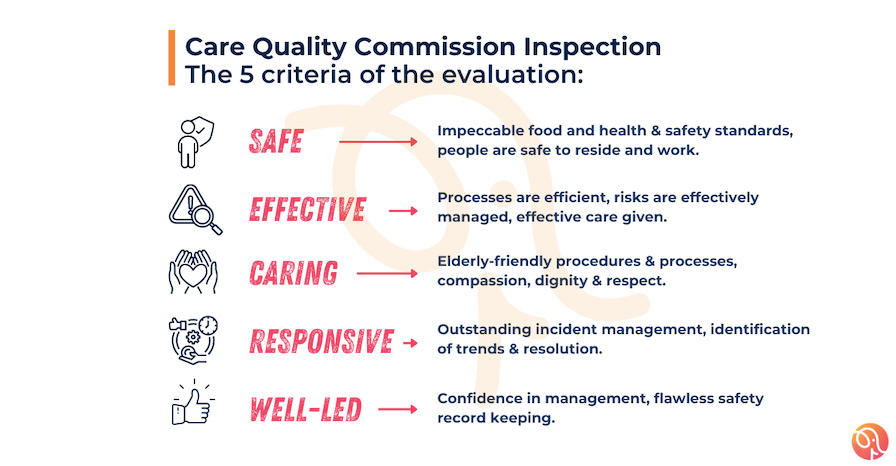
The CQC (Care Quality Commission) is an independent regulator in the UK which checks that your care home has flawless safety standards for people’s loved ones. In order to protect the most fragile, their evaluation is based on the following 5 criteria:
- Safe (impeccable food and health & safety standards, people are safe to reside)
- Effective (processes are efficient, risks are effectively managed, effective care given)
- Caring (elderly-friendly procedures & processes, compassion, dignity & respect)
- Responsive (outstanding incident management, identified trends & resolution)
- Well-led (confidence in management, flawless record keeping)
Your final rating will strongly impact your care home reputation as families will look for the safest and most caring residences for their loved ones. If you receive a bad score, expect tough sanctions such as fines, prosecution and even shutting down if it’s unsafe for the most fragile.
6 tips to efficiently manage health & safety in a care home
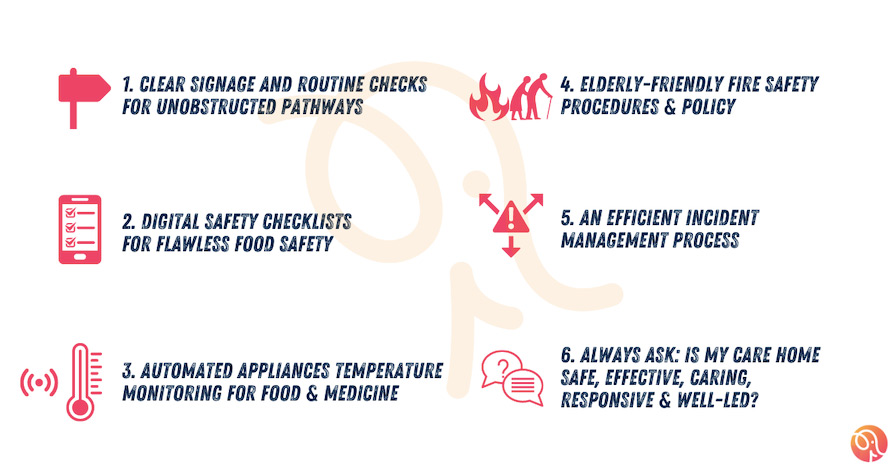
1. Clear signage and routine checks for unobstructed pathways
Let’s start with a few facts. There are 17,100+ care homes in the UK and almost 70% of care home residents have dementia or similar severe memory issues according to Alzheimer’s Society. That’s why it is so important to guarantee a safe layout of the premises with clear signage and unobstructed pathways. So we recommend to:
- Use clear signage (big and obvious)
- Consider visual aids like icons (e.g. arrows) and bright colours to signal obvious dangers
- Don’t be scared of using a lot of signage
- Ensure frequent checks are carried out to look for any new obstruction
Keep in mind that slips, trips and falls remain the major health and safety issue according to the latest HSE data. Indeed, they account for almost 51% of all non-fatal injuries at work so it’s important to ensure pathways and the overall care home layout are safe for your teams as well. Similarly, train your teams to routinely check for any spillage on floors and unsafe stairs railings that could lead to accidents from your most vulnerable residents.
2. Digital safety checklists for flawless food safety in care homes
You must comply with the Food Safety Act 1990 in Care Homes. Indeed, the CQC will inspect your food safety practices to ensure that it is safe for your residents. Not only are your residents vulnerable and more likely to catch foodborne illnesses with severe complications, but they also often have specific diets and allergies. So stay on the safe side and ensure your care home has watertight food safety practices in place.
Your teams have a lot on their plate so our second tip is to simplify food safety processes. Opt for digital checklists to transform the safety management of your care home(s) into a simple, centralised and digitised system. Find a system that lets you create any checklist you’d like such as:
- Food storage checks
- Kitchen cleaning routines
- Special diets and allergies
- Residents mini-kitchens cleaning checks
- Post-caring activities hand washing procedures
Then, smoothly run these checklists during your daily operations and sign them off within seconds, digitally. Assign specific tasks to different carers and teams and ensure flawless food safety for your lovely residents.
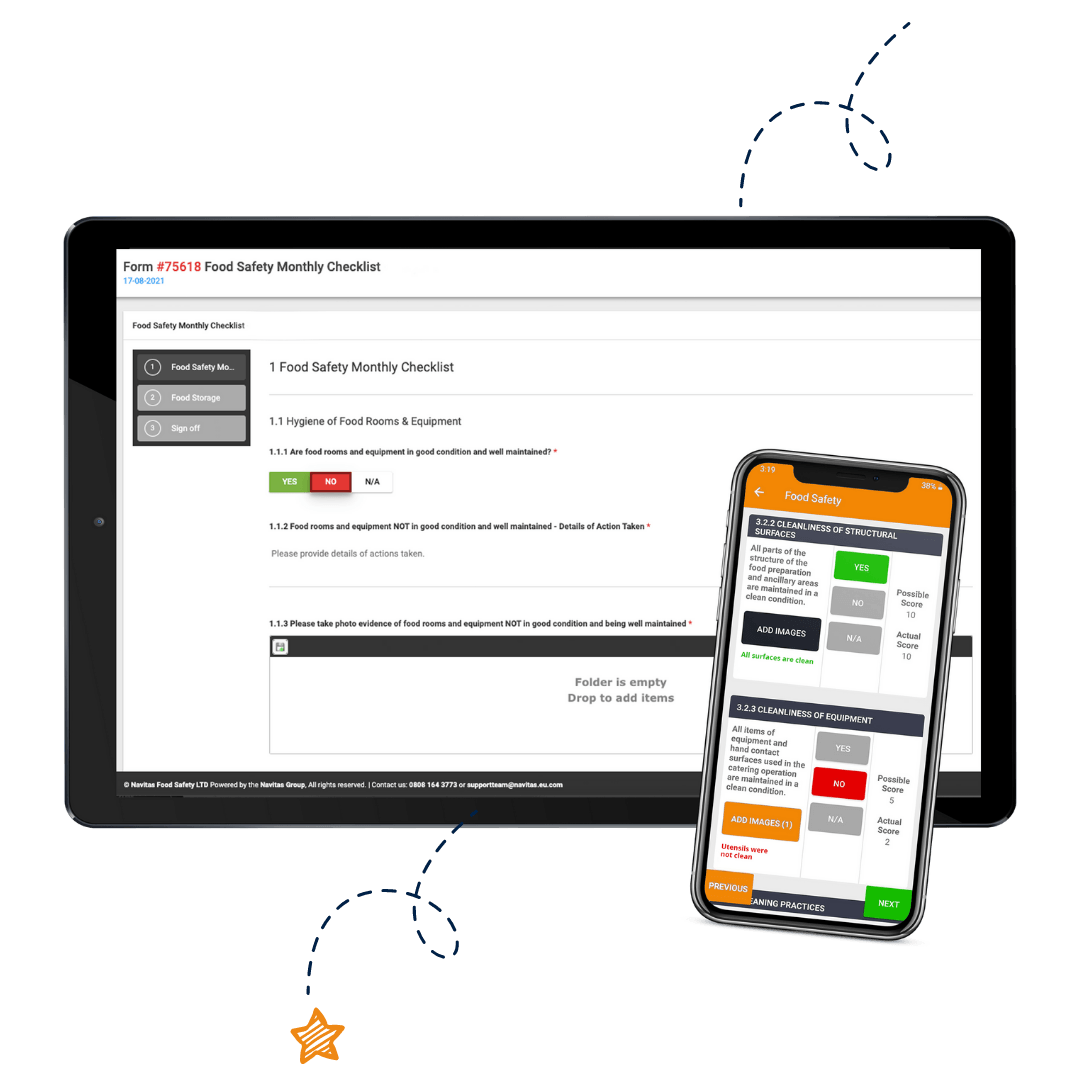
3. Automated appliances temperature monitoring for food and medicine
Another core aspect of health and safety in care homes is compliant temperatures. Whether in terms of medicine storage or food, your CQC inspector will thoroughly check that it’s all kept at safe temperatures. Once again, your residents are vulnerable and any illness from unsafe food or medicine could lead to severe complications such as dehydration, organ failure or worse.
So we suggest you take temperature monitoring to the next level of safety with an automated system. Smart sensors can be placed in your fridges and freezers and automatically check temperatures every 30 minutes. If anything falls out of compliance range, your teams will be alerted by text or email. In fact, this kind of system is a great way to ensure flawless safety as well as giving back more time to your teams. That way they can spend more time chatting and caring for your residents instead of manually checking temperatures every hour!
Give your residents and teams that extra touch of care. Discuss your care home needs with our lovely experts!
4. Elderly-friendly fire safety procedures & policy 🔥
When managing a care home health and safety it’s important to consider your residents’ limited physical abilities. In fact, this is specifically important with fire safety procedures. Indeed a lack of regular fire tests at your care home could slow down your teams’ evacuation and lead to panic and anxiety attacks among your residents in case of a real fire. So ensure fire safety training is given to your teams and that everyone is aware of what to do in case of a fire.
In addition, consider the layout of your care home and fire exits. Your residents move at reduced speed and are more likely to panic, leading to more dangerous falls. It’s always a good idea to review your fire safety policy, checklists, procedures with an expert. This will help showcasing your commitment to make your care home safer and more caring. If any incident happens, we recommend using some health and safety incident management software for quicker processes.
Fancy a quick chat with one of our fire safety experts? 🔥

5. Set up an efficient incident management process
Now let’s take the scenario where an incident has sadly happened. It could be a fall, food poisoning, anaphylactic shock, a legionella outbreak in water or medicine kept at unsafe temperatures. In this kind of situation it is absolutely essential that you investigate properly to understand what went wrong and prevent this from happening again, costing you fines, recovery fees and also reputational damage. Keep in mind that this is a core criterion of the CQC inspection: is your care home responsive?
That’s why you should implement an efficient incident management system. Ditch the pen and clipboard and switch to a digital system that will record all information (what, when, who, why, how) with evidence such as pictures. Incidents have to be properly investigated to eliminate the root cause. Once this is found, empower your teams with extra training, schedule frequent safety audits and food & water sampling if necessary. Such an approach will also give confidence to your CQC inspector that your care home is well-managed. All in all, protect your people with 5-star care home health & safety standards.
Have you considered a digital incident management software for your care home?
6. Always ask yourself: Is my care home safe, effective, caring, responsive and well-led?
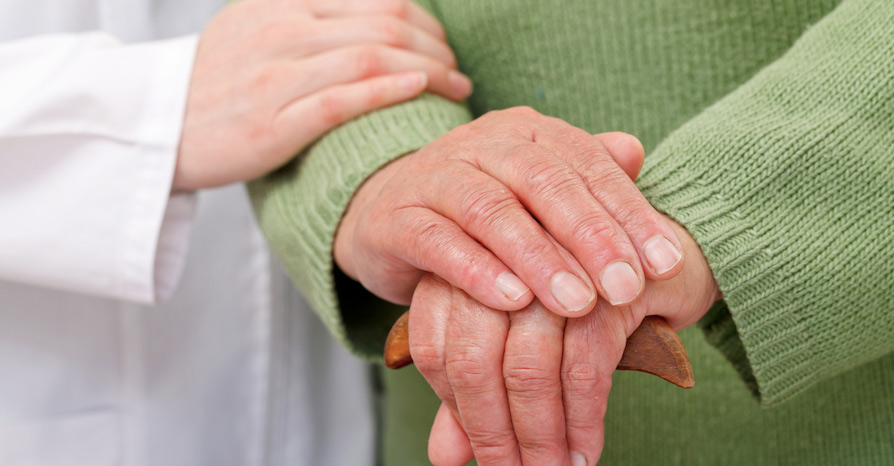
If in doubt, just review your current health and safety processes and act where needed. Many care homes still fail their inspections because of bad cleanliness and a lack of confidence in management. Managing health and safety in care homes has to be proactive with constant reviewing and tackling any new hazard with appropriate mitigation measures. That’s how you go the extra mile to protect the most fragile and offer an outstanding level of care.
Let’s discuss your specific needs! 🧡
Some of our experts have specific knowledge of safety in the care sector. Tell us more about your care home needs to get the ball rolling.
